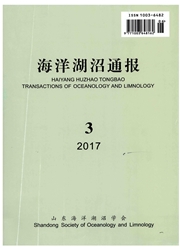

 中文摘要:
中文摘要:
实验对青岛沿海10月的石莼以及5月的石莼和裙带菜的叶面附着细菌群落进行了Biolog碳源利用实验,结果表明不同海藻表面的细菌群落碳源利用有较大的差异,且同一种海藻不同的采集时间其细菌群落也有较大的差异。荧光原位杂交方法表明采用EUB-fluo探针比SYBR_Green染色的效果要好;γ-Proteobacteria在不同海藻表面占据了较高的比例;裙带表面观察到了一些特异性链珠状细菌;石莼表面的细菌形态展示了较高的多样性。从海藻表面分离的优势菌落中分离到1株细菌,16SrDNA测序表明该序列与已知的尸seudoalteromonas16S rDNA序列的相似性为99.9%。本研究为海洋无环境公害防污材料的研究提供了一些新的思路。
 英文摘要:
英文摘要:
AMicrobial communities were obtained from the surface of Ulva lactuca and Undaria pinnatifida in May 2008 and Ulva lactuca in October 2007. Biolog ecophysiological characteristic experiment revealed that the ecophysiology differences existed between both different algae species and different collection times. Fluorescence in situ hybridization ob- servations suggested that the hybridization effect of probe EUB-fluo was much better than of Sybr Green; γ-Proteobacteria appeared to be dominant in the algae samples. Streptococcal bacteria were only detected from the surface of Undaria pinnatifida, while bacteria configurations showed more diversity on the surface of Ulva lactuca. One dominant bacteria strain was isolated from the algae based on the culture method, whose 16S rDNA sequence showed 99.9% similarity to the known Pseudoalteromonas species. The data gained supply a new idea and opinion for non-environmental harmful material in the future.
 同期刊论文项目
同期刊论文项目
 同项目期刊论文
同项目期刊论文
 期刊信息
期刊信息
